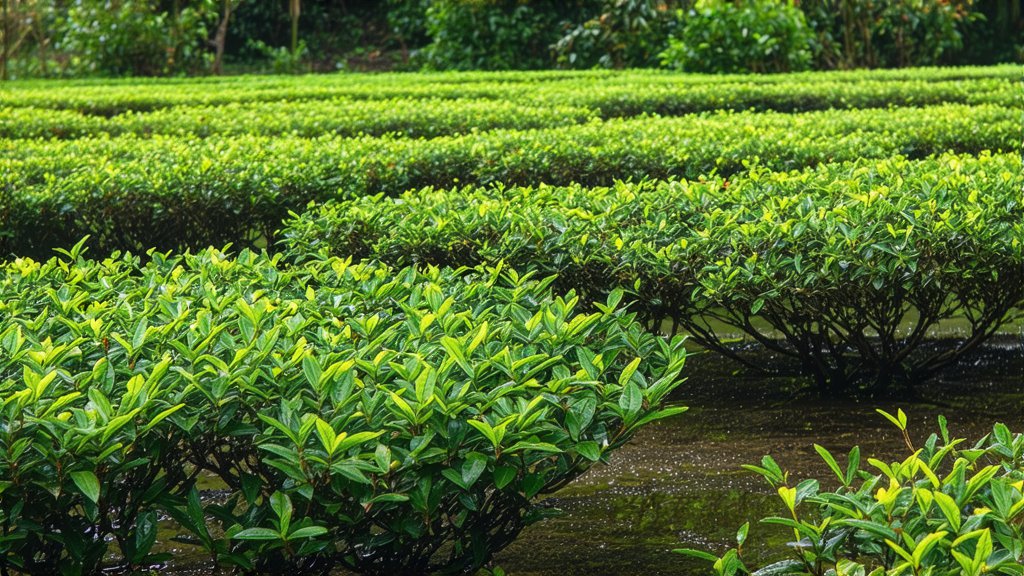
In the vast and diverse landscape of Chinese tea culture, few varieties capture the imagination quite like Keemun Black Tea. This exquisite beverage, hailing from the picturesque hills of Qimen County in Anhui Province, stands as a testament to centuries of tea-making tradition and innovation. Its rich history, unique processing methods, and unparalleled flavor profile have earned it a distinguished place not only within China but also on the global stage. Join us as we embark on a journey through the golden elixir that is Keemun Black Tea.
A Historical Glimpse
The origins of Keemun Black Tea can be traced back to the Tang Dynasty (618-907 AD), although it wasn't until the Qing Dynasty (1644-1912) that this particular variety gained prominence. Legend has it that its development was accidental, resulting from a blend of local tea leaves and innovative techniques introduced by a British tea merchant. Over time, the process refined, and what emerged was a tea that embodied the essence of both East and West – a fusion that would captivate palates worldwide.
Varieties within Keemun
Keemun Black Tea is not monolithic; rather, it encompasses several sub-varieties, each with its own distinct characteristics. Among these, the most renowned are:
- Keemun Mao Feng: Known for its delicate, downy buds and a flavor reminiscent of orchids mixed with sweet honey.
- Keemun Hao Ya: This grade features slightly more mature leaves, offering a fuller body and a taste profile that balances sweetness with a hint of smokiness.
- Keemun Xian Mi: Often considered the pinnacle of Keemun production, Xian Mi translates to "Fairy Mist," reflecting the misty conditions under which these leaves grow. It boasts an exceptionally smooth texture and a complex aroma that lingers on the palate.
The Art of Craftsmanship
The magic of Keemun Black Tea lies in its meticulous production process, which involves several stages:
- Withering: Freshly picked tea leaves are spread out to wilt under the sun or in a controlled environment, reducing moisture content and preparing them for rolling.
- Rolling: Leaves are gently rolled to break down cell walls, allowing enzymes to interact with oxygen, initiating oxidation.
- Oxidation: This crucial step transforms the green leaves into their characteristic black hue, developing the tea's unique flavor and aroma. The degree of oxidation varies between different Keemun grades.
- Firing: To halt oxidation and fix the flavors, the leaves undergo high-temperature drying. This process also enhances the tea's fragrance and contributes to its final color.
- Sorting and Grading: Once dried, the tea is sorted based on leaf size, shape, and quality, ensuring consistency and maintaining the integrity of each grade.
Savoring Keemun: A Guide to Appreciation
To truly appreciate Keemun Black Tea, one must engage all senses in the tasting experience. Here’s a guide to help you unlock its full potential:
- Warm the Teapot: Begin by warming your teapot or gaiwan with hot water to maintain the optimal temperature for brewing.
- Measure the Leaves: Use approximately 3 grams of loose leaf tea per 150ml of water. Adjust according to personal preference for stronger or milder flavors.
- Boil the Water: Bring water to a boil and let it cool slightly to around 90-95°C (194-203°F), ideal for extracting the best flavors without bitterness.
- Steeping Time: For the first infusion, steep for about 2-3 minutes. Subsequent infusions can be longer, as Keemun leaves can withstand multiple brews without losing flavor.
- Observe the Liquor: As the tea steeps, observe the transformation of water into a deep amber liquid, indicative of the tea's richness.
- Inhale the Aroma: Before taking your first sip, bring the cup close to your nose and inhale deeply to appreciate the intricate aromas of Keemun.
- Sip and Savor: Take small sips, allowing the tea to coat your palate fully. Notice the initial sweetness, followed by subtle floral notes and a lingering aftertaste that speaks of its mountainous origins.
Conclusion
Keemun Black Tea is more than just a beverage; it is an embodiment of China's rich tea heritage and a bridge connecting cultures through shared appreciation of nature's bounty. From its storied past to its modern-day popularity, Keemun continues to enchant tea enthusiasts with its golden liquor, sweet honey flavor, and the artful craftsmanship behind every cup. Whether you're a seasoned connoisseur or a curious newcomer, exploring Keemun Black Tea offers a gateway into the profound depths of Chinese tea culture and the simple yet profound pleasure it brings.